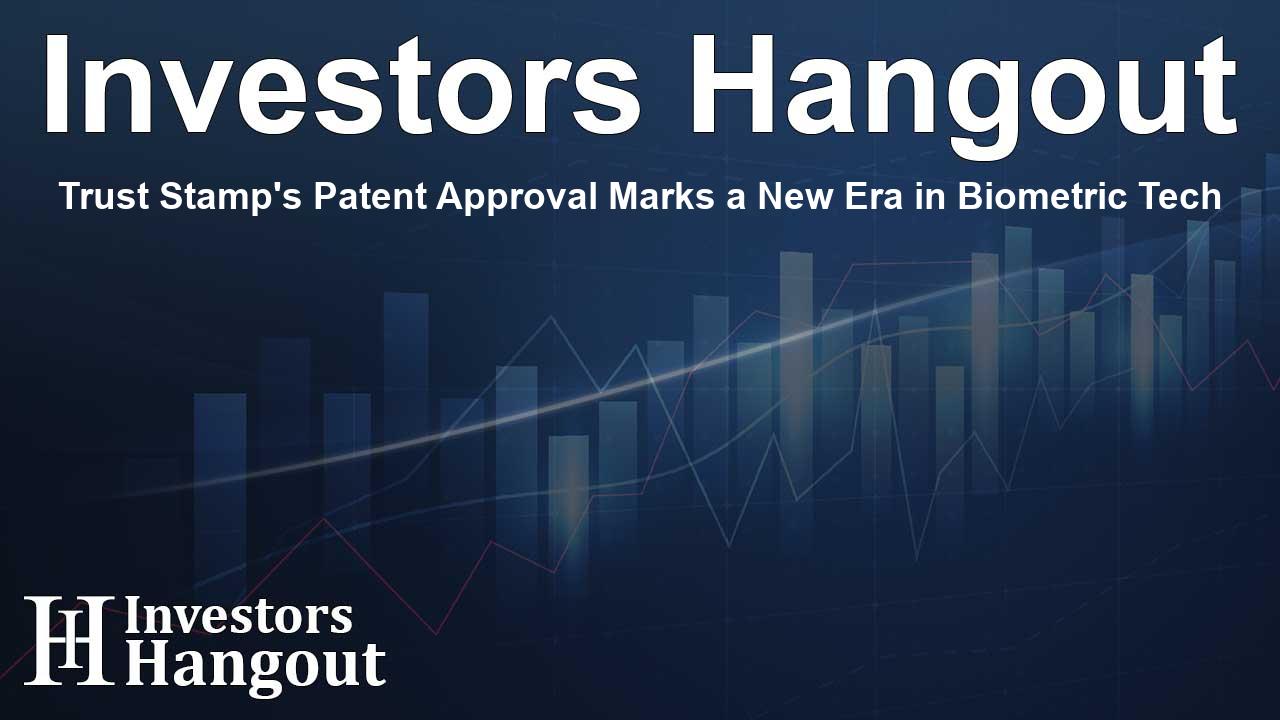Trust Stamp's Patent Approval Marks a New Era in Biometric Tech

Trust Stamp Achieves Major Patent Approval
Trust Stamp, a leader in biometric security innovations, recently announced a significant milestone with the allowance of its Non-Provisional Patent Application 17/725,978 by the United States Patent and Trademark Office. This patent relates to the "Interoperable Biometric Representation" framework, a technology that has the potential to revolutionize biometric services by enhancing interoperability and protecting user privacy.
The Challenge of Biometric Interoperability
In today’s rapidly evolving digital landscape, biometric systems are increasingly utilized for identification and verification. However, many organizations face challenges due to proprietary data formats used by various biometric vendors. These discrepancies create vendor lock-in scenarios, trapping customers in a cycle of reliance on singular service providers. Trust Stamp's innovative solution addresses this pressing issue by allowing biometric data to be transformed into a universal format.
Universal and Secure Biometric Data
The framework developed by Trust Stamp enables seamless comparisons of biometric samples across different platforms. By converting biometric data into a standardized and privacy-secured format, organizations can validate identities without being constrained by proprietary systems. This means enterprises can effectively manage their biometric data while also leveraging various vendor capabilities without compromising on privacy or security.
Privacy-Enhancing Technology at Its Core
One of the standout features of the Interoperable Biometric Representation is its commitment to privacy-enhancing technology (PET). This approach generates unique identity tokens, known as irreversibly transformed identity tokens (IT2™), which enable secure biometric matches without the risk of exposing sensitive data. Users can perform authentication tasks confidently, knowing that their biometric information remains confidential.
Insights from Trust Stamp Leadership
Scott Francis, Chief Technology Officer of Trust Stamp, shared his excitement about this advancement, stating, "Interoperability in facial biometrics is non-existent today, and this patent addresses that gap. It allows different vendor templates to be compared by converting them into a common format, while also providing an open neural network that facilitates the integration of compliant face templates." Such insights illustrate the significance this patent holds not just for Trust Stamp but for the biometric industry as a whole.
Commitment to Customer Empowerment
Dr. Norman Poh, Chief Science Officer at Trust Stamp, further elaborated: "This innovation not only tackles interoperability but also fosters a privacy-preserving approach. Our IT2 tokens empower users to compare biometric data from various sources, sidestepping the pitfalls of vendor lock-in that have historically impacted customers." This dual benefit emphasizes Trust Stamp’s commitment to enhancing the user experience and security.
Path Ahead for Trust Stamp
This patent approval is a pivotal moment for Trust Stamp as it aligns with the company’s mission to offer secure, privacy-first identity verification solutions. The introduction of the Interoperable Biometric Representation framework not only strengthens the company's offerings but also supports the broader goal of achieving secure financial inclusion. By facilitating cross-platform biometric authentication, Trust Stamp is paving the way towards an open and accessible digital identity ecosystem.
Trust Stamp continues to lead the charge in biometric solutions for various sectors, including banking, regulatory compliance, government, real estate, and humanitarian services. Their technology empowers organizations to prevent fraud, protect personal data, and enhance operational efficiency globally.
Frequently Asked Questions
What is the Interoperable Biometric Representation patent about?
The patent focuses on a framework that enhances interoperability among biometric systems, addressing vendor lock-in and ensuring privacy.
How does Trust Stamp maintain privacy in its biometric solutions?
Trust Stamp utilizes Irreversibly Transformed Identity Tokens (IT2™) to enable biometric matching without storing sensitive data, ensuring user privacy.
Who are the key individuals leading Trust Stamp's innovation?
Scott Francis and Dr. Norman Poh are pivotal figures in driving Trust Stamp's advancements in biometric technology.
What industries can benefit from Trust Stamp's technology?
Trust Stamp's identity solutions cater to various sectors, including banking, government, real estate, and humanitarian services, among others.
Is Trust Stamp publicly traded, and if so, where?
Yes, Trust Stamp is publicly traded on the Nasdaq Capital Market under the ticker Nasdaq: IDAI.
About The Author
Contact Thomas Cooper privately here. Or send an email with ATTN: Thomas Cooper as the subject to contact@investorshangout.com.
About Investors Hangout
Investors Hangout is a leading online stock forum for financial discussion and learning, offering a wide range of free tools and resources. It draws in traders of all levels, who exchange market knowledge, investigate trading tactics, and keep an eye on industry developments in real time. Featuring financial articles, stock message boards, quotes, charts, company profiles, and live news updates. Through cooperative learning and a wealth of informational resources, it helps users from novices creating their first portfolios to experts honing their techniques. Join Investors Hangout today: https://investorshangout.com/
The content of this article is based on factual, publicly available information and does not represent legal, financial, or investment advice. Investors Hangout does not offer financial advice, and the author is not a licensed financial advisor. Consult a qualified advisor before making any financial or investment decisions based on this article. This article should not be considered advice to purchase, sell, or hold any securities or other investments. If any of the material provided here is inaccurate, please contact us for corrections.
